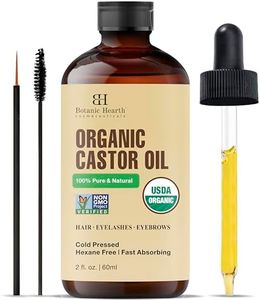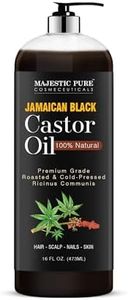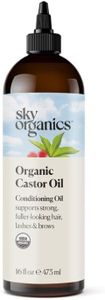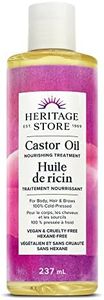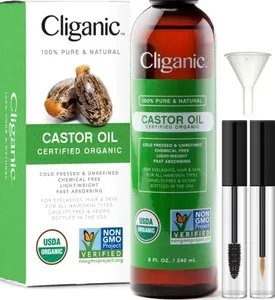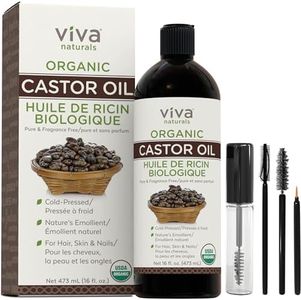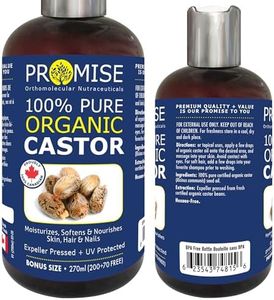We Use CookiesWe use cookies to enhance the security, performance,
functionality and for analytical and promotional activities. By continuing to browse this site you
are agreeing to our privacy policy
10 Best Organic Castor Oils
From leading brands and best sellers available on the web.Buying Guide for the Best Organic Castor Oils
Choosing the right organic castor oil can make a big difference in your beauty or wellness routine. Castor oil is popular for its moisturizing, hair-strengthening, and skin-soothing properties. When shopping for organic castor oil, it's important to look beyond just the label and understand what makes a product high quality and suitable for your needs. By paying attention to a few key specifications, you can ensure you’re getting a pure, effective, and safe product that matches your intended use, whether it’s for hair care, skin care, or other natural remedies.Purity and CertificationPurity refers to how unadulterated the castor oil is, and certification (like USDA Organic) shows that the oil is made from organically grown castor beans without synthetic chemicals. This is important because pure, certified organic oils are less likely to contain harmful residues or additives. When comparing products, look for clear labeling about organic certification and check for third-party seals. If you want the safest and most natural option, always choose oils that are certified organic and state they are 100% pure, especially if you plan to use it on your skin or hair.
Extraction MethodThe extraction method tells you how the oil was obtained from the castor beans. Cold-pressed oils are extracted without heat, preserving more nutrients and making the oil gentler for skin and hair. Expeller-pressed oils use some heat, which can reduce nutrient content but may be more affordable. If you want the highest quality and most nourishing oil, look for cold-pressed castor oil. This is especially important for sensitive skin or if you’re using the oil for beauty treatments.
Color and ConsistencyCastor oil can range from pale yellow to almost clear, and its consistency is usually thick and sticky. Lighter color and a clean, thick texture usually indicate a pure, minimally processed oil. If the oil is very dark or watery, it may be mixed with other substances or overly processed. For most uses, a pale yellow, thick oil is ideal, as it’s likely to be pure and effective. If you prefer easier application, you might look for slightly lighter oils, but always check that no thinning agents are added.
ScentPure castor oil has a mild, earthy scent. Strong or unpleasant odors can be a sign of poor quality or added fragrances. If you are sensitive to smells or plan to use the oil on your face or scalp, choose an oil with a neutral, natural scent. Always avoid products with artificial fragrances if you want a truly organic and gentle product.
PackagingPackaging matters because castor oil can degrade when exposed to light and air. Dark glass bottles are best because they protect the oil from sunlight and help preserve its quality. Plastic bottles are less ideal, as they can leach chemicals into the oil over time. If you want your oil to stay fresh and effective, choose products in dark glass bottles with tight-sealing caps.


